A ‘miracle’ once saved these hawkers’ lives. Their stall is now battling to survive again
The founders of Gina’s Vadai almost ended it all in despair years ago, but a phone call revived their fortunes. The programme On The Red Dot finds out how the business is now facing up to the COVID-19 pandemic.
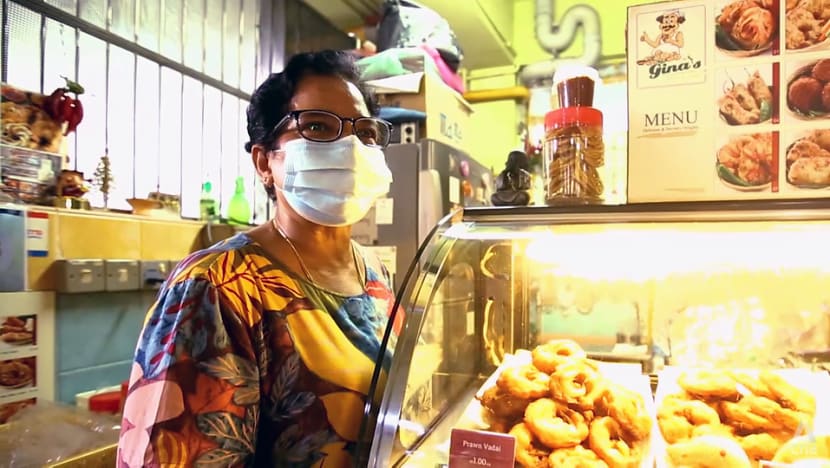
Snack sellers like Gina Rajan of Gina's Vadai may be facing more uncertainty than other hawkers.
SINGAPORE: There are nine types of vadai (deep-fried lentil fritters) on sale at Gina Rajan’s stall at Dunman Food Centre, such as dhal, prawn, vegetable and ikan bilis vadai.
They all have one thing in common, according to her.
“My vadai is very crispy on the outside, soft on the inside — when you have one bite, you feel like eating more,” the 63-year-old said about the Indian snack made to her late husband’s secret recipe.
She has been selling vadai since 1985. Her stall, Gina’s Vadai, has moved multiple times, from its original premises in Geylang Bahru to Simpang Bedok and other locations before it settled in Dunman Food Centre in 2017.
It has not been easy to survive this long, she tells the programme On The Red Dot about her fluctuating fortunes over the years which have taken her from the pits of hopelessness and grief, to the heady high of success.
WATCH: Widow behind Gina’s Vadai fights to keep husband’s legacy alive (4:03)
Now with the COVID-19 pandemic, business is only getting worse for one of Singapore’s oldest vadai brands.
READ: ‘Too many established names have fallen’: F&B industry group calls for more support from authorities
READ: S$1.1 billion support package for workers, businesses hit by Phase 2 (Heightened Alert) restrictions
IT STARTED AT HOME
Gina got married to husband James in 1981, and she remembers two things he told her about himself: He loved vadai, and he wanted to open a business.
They first started making the snack at home, planning to sell it door to door. Her eldest son, David, who was four or five years old then, even volunteered to help.
The now 39-year-old does not remember much, but he recalls trying to sell “50 pieces or so” and getting feedback on his parents’ product. “It was literally just pocket money — spare cash that would help the family,” he says.
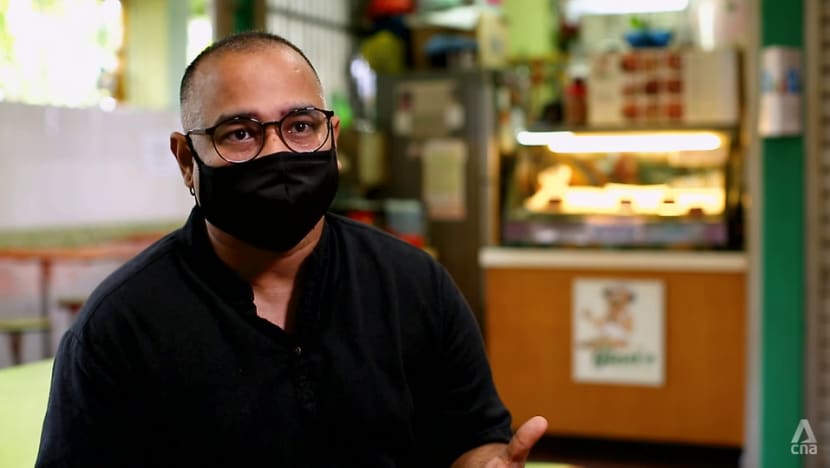
In 1987, they opened their first stall. “Dad came up with about S$300. And they gathered some pots and pans and frying materials and, through the business, slowly grew to buy other things,” recounts David. “It was really from scratch.”
As time passed, they made a name for themselves — perhaps, Gina quips, owing to a name change. Previously their stall was called Born Again Vadai. But a friend of her husband’s suggested that he put her name on the signboard.
“You’ll see. Your business will boom,” she remembers him saying. “(Sure) enough, the business totally turned around.”
BY A MIRACLE
But in 1994, the demolition of some blocks in the vicinity affected their business. “Because the crowd that (used to) walk past was no longer there,” says David.
His parents moved to another stall, in Simpang Bedok. But in a location where no one knew about them, business was bad.
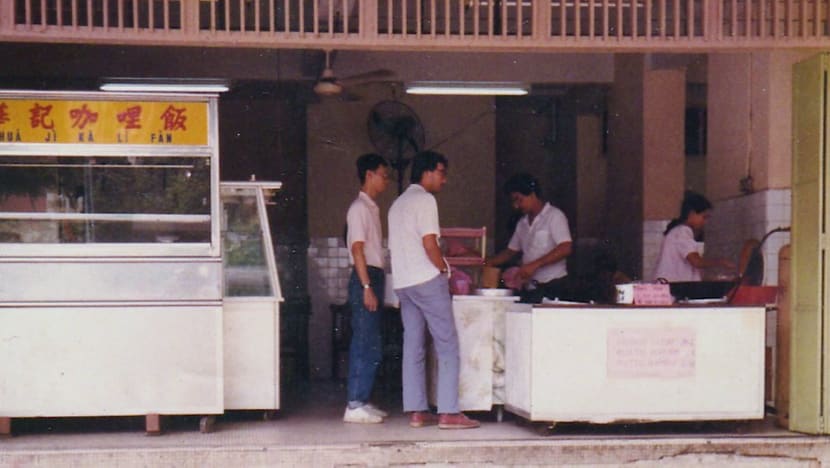
James despaired and felt like they should both end it all.
But at the last minute, their phone rang. “So he answered the call. A guy said, ‘I need to do some write-up about you and your vadai,’” she recounts. “(The caller) said, ‘My name is Seetoh, from Makansutra.’”
After their vadai was featured in the food guide, the newspapers started calling, she says. Their business was also featured on television. “After the write-up, the queue was super long,” Gina adds. “That was really a miracle.”
CARRYING ON
Once business picked up, James wanted to open more outlets. But in 2009, he died of a heart attack.
“When he held my hand on the way (to hospital), I was telling him, ‘You don’t have to worry, you take care,’” Gina recalls. “I didn’t know he was going to leave me.”
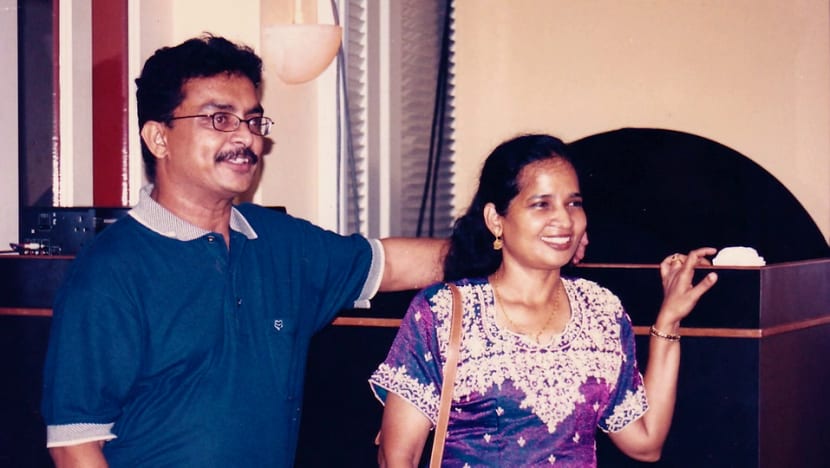
Since then, she says through her tears, life has been difficult. Although she tried to hide her emotions and be strong for her three children, they could not help but notice the change in her.
“It was really emotional (for us to) see her lose the one support that she always felt (she’d have),” says David. The family decided to downsize the business and eventually moved to their current location.
She missed her husband. But she never gave up and held fast to what he used to tell her. “He always pushed me, asked me to learn, (to) always trust God (and) carry on with the business,” she says.
“I still have to take care of this family. I need to survive, so I just carry on my life that way.”
READ: Singapore’s ageing heritage hawkers hope for successors; one has put up recipe for sale
READ: Hawkers and their heirs struggle with uncertainty — and lack of rental relief
RICE BOWL IN DANGER
But now, Gina is facing a big drop in customer numbers. Before the pandemic, she could sell at least 300 vadai a day; nowadays, her sales average about 100 pieces a day.
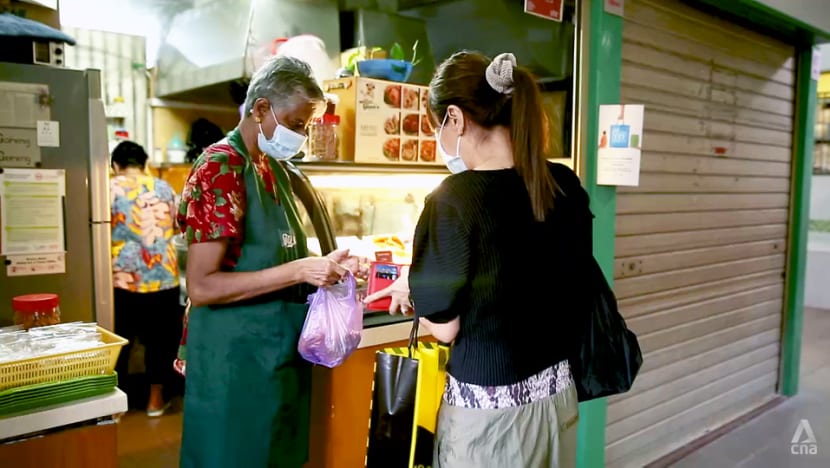
She does not offer delivery, she says, as she has no one to do it for her. Customers have requested that she go online, but she does not know how.
Going with the food delivery platforms would mean having to sell her vadai for S$1.80 apiece, when people already think S$1 is expensive, she adds. “(At) S$1.80, I’d be saying bye-bye (to them).”
When it comes to food deliveries, the hawker option also tends to be overlooked, according to food blogger Leslie Tay.
“A packet of chicken rice (is) S$5 or S$4, and then you’ve got to pay the delivery fee. It just doesn’t make much sense,” he says.
“(So) people … buy something of a higher value, and then the delivery charge makes sense.”
Compared to hawkers selling meals, snack sellers face even greater uncertainty. “A lot of the sales for snacks come from people wandering around,” says food blogger Seth Lui. “In the COVID-19 situation, people do less of that.
“A lot of people are coming out to just purchase lunch and dinner. And they don’t really want to stay out long, so I think the chance of an impulse buy is lowered.”
WATCH: Hawker snacks: Why are they more affected by the pandemic? (23:23)
Gina is especially affected whenever COVID-19 restrictions are tightened and dining out is suspended.
“Say we’re starting to fry … (but) they don’t want to wait,” she says, citing customers who say they are in a rush or have a car waiting. “That kind of situation (is what) we’ve gone through. It’s not easy.”
THE QUESTION OF SUCCESSION
Gina is carrying on as best as she can. But a question also remains as to whether her business can continue after she retires.
David once had to run the stall on his own — when his mother went to India to get treatment for a head injury.
“I was struggling with it and eventually picked it up. But it couldn’t work for (me in terms of) income and Mum’s income as well,” he says.
“We’re still trying to figure out how we can mass-produce (the vadai), because that’s the only way forward.”
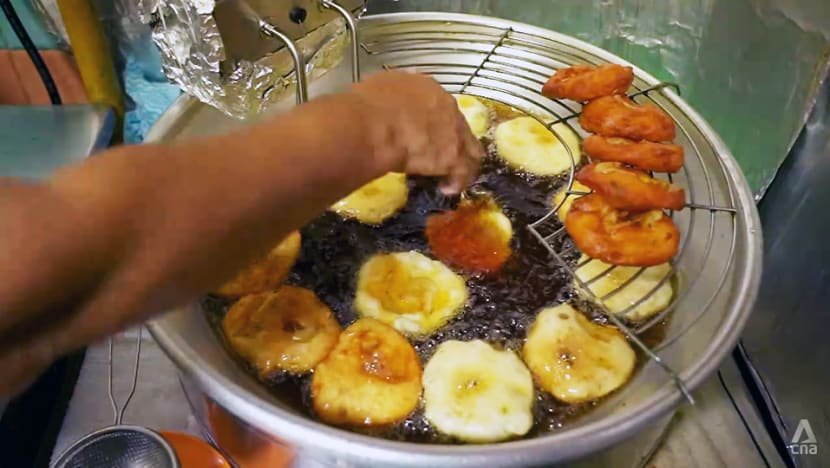
At present he is reluctant to quit his “stable” job to take over the stall. He is a property agent who also does some interior design.
For children of hawkers, he says, giving up a career to take over the family business can be akin to “starting from zero”.
While his family has had offers for their recipe, he discloses, his mother is “very sentimental” about it and “wouldn’t want the recipe to go to anybody else”.
She has not given up hope that her children will take over. “In future, I’ll just pass the recipe to them. I’ll say, ‘Whenever you all really want to do (it), you all do (it),’” she says.
“Mummy won’t force (you), but this is what your father told me to do.”
Watch this episode of On The Red Dot here. The programme airs on Channel 5 every Friday at 9.30pm.
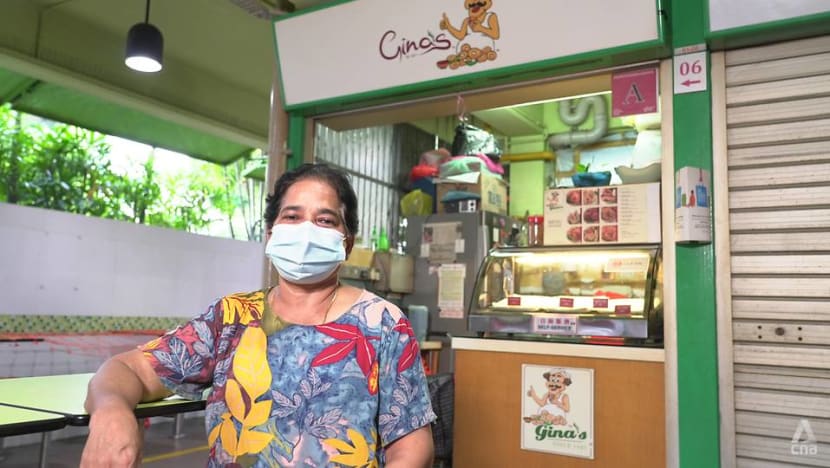
Where to get help:
Samaritans of Singapore Hotline: 1800 221 4444
Institute of Mental Health’s Helpline: 6389 2222
Singapore Association of Mental Health Helpline: 1800 283 7019
You can also find a list of international helplines here. If someone you know is at immediate risk, call 24-hour emergency medical services.

















